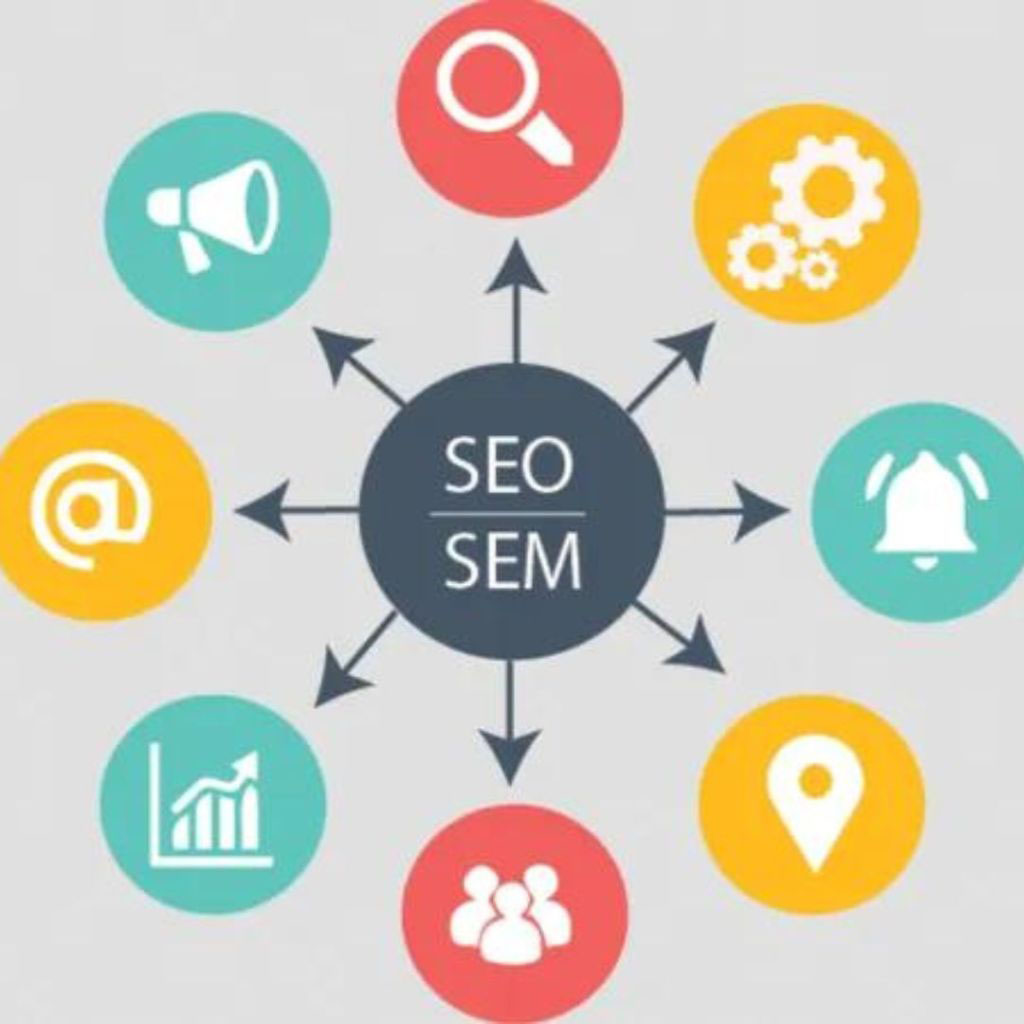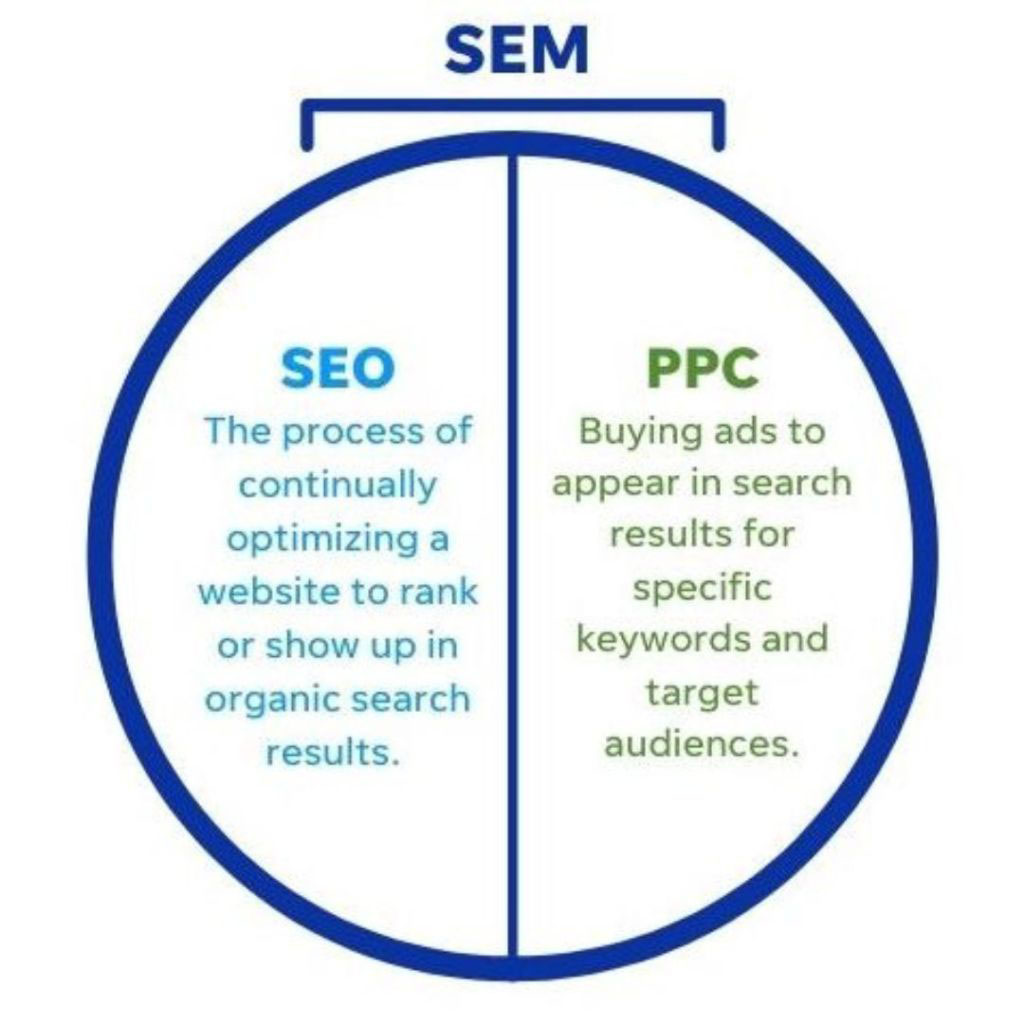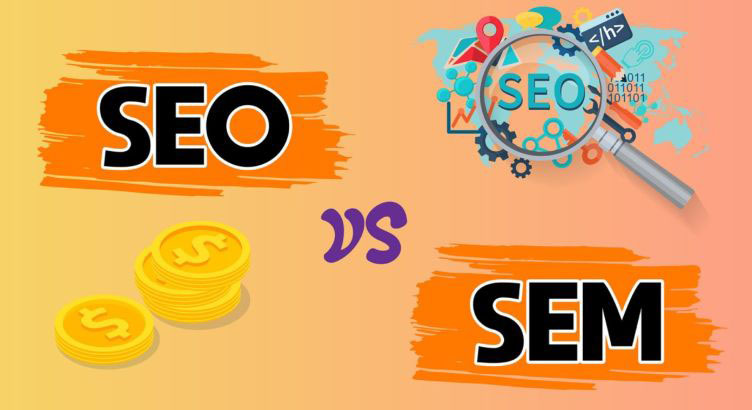Two abbreviations that crop up frequently in discussions about the dynamic world of digital marketing are SEM and SEO. These concepts are linked, yet they have different functions for increasing website traffic and online visibility. Search Engine Optimization (SEO) and Search Engine Marketing (SEM) are two terms that are vital for anyone trying to make their way in digital marketing. Discover the ins and outs of SEM vs SEO, as well as the advantages and disadvantages of each, in this in-depth essay.
SEM vs SEO – Unraveling the Acronyms
Before we plunge into the comparison, let’s demystify the acronyms. SEM stands for Search Engine Marketing, a comprehensive approach to promoting websites by increasing search engine results pages (SERPs) visibility. Search Engine Optimization, on the other hand, is a branch of Search Engine Marketing that emphasizes natural ways to raise a website’s position in SERPs. Let’s break down each concept further.
Understanding SEM (Search Engine Marketing)
Search Engine Marketing encompasses various strategies to boost a website’s visibility on search engines. The primary component of SEM is paid advertising, commonly known as Pay-Per-Click (PPC) campaigns. When people search using specific keywords, advertisements from those advertisers appear at the top of the results page. When done correctly, search engine optimization (SEO) can quickly raise a website’s profile and attract qualified visitors.

One of the critical advantages of SEM is its ability to deliver quick results. Paid advertisements can be set up and launched rapidly, making SEM an ideal choice for businesses looking for immediate visibility and traffic. However, the downside is the ongoing cost associated with paid campaigns. Advertisers must carefully manage their budget to guarantee a favorable return on investment (ROI), as they pay for every click.
Budget Considerations: SEM vs SEO
- SEM Budgeting: SEM involves paid advertising, requiring a dedicated budget for PPC campaigns. Advertisers must manage costs effectively to ensure a positive ROI, monitoring click-through rates, conversion rates, and cost per acquisition.
- SEO Budgeting: SEO typically has lower ongoing costs than SEM since it focuses on organic methods. However, it requires investment in content creation, technical SEO improvements, and hiring SEO experts or agencies for optimal results.
Long-term Sustainability: SEM vs SEO
- SEM Sustainability: While SEM can provide immediate visibility and traffic, its sustainability depends on continuous investment in PPC campaigns. Pausing campaigns can lead to a sudden drop in visibility and traffic.
SEO Sustainability: SEO efforts focus on organic growth, which leads to sustainable long-term results.
Navigating SEO (Search Engine Optimization)
Conversely, SEO enhances a website’s organic ranking in search results by modifying its content and structure. In contrast to SEM, direct payments for visibility are not involved in SEO. In contrast, SEO employs off-page and on-page strategies to increase a site’s authority and relevancy in search engine results.
On-page SEO involves optimizing elements within the website, such as meta tags, headings, and content, to align with targeted keywords. Off-page SEO focuses on building external factors like backlinks and social signals contributing to a website’s credibility. While SEO may take time to show results, the benefits are long-lasting, and once a website achieves a high organic ranking , the traffic is essentially free.
The Battle of Timing – When to Use SEM vs SEO
Prioritizing SEM or SEO depends on a digital marketing strategy’s specific goals and timeline.
Choosing SEM for Quick Wins
SEM is the go-to option if your business needs immediate visibility and a rapid influx of targeted traffic. PPC campaigns can be launched quickly, and the results are almost instantaneous. SEM is excellent for promotions, product launches, or time-sensitive campaigns where quick wins are crucial.

Embracing SEO for Sustainable Growth
Conversely, SEO is a long-term investment that pays off over time. SEO is the way to go if your business aims for sustainable, organic growth and to establish a solid online presence. While it may take months to see significant results, the payoff is a steady stream of high-quality, organic traffic that doesn’t require ongoing payments for each click.
The Symbiotic Relationship – Harmonizing SEM and SEO Strategies
Search engine optimization (SEO) and pay-per-click (PPC) advertising are complementary rather than competitive as we explore the vast world of digital marketing. In this section, we’ll explore how businesses can leverage the strengths of both SEM and SEO to create a synergistic approach that maximizes visibility, traffic, and long-term success.
FAQ’s
1. What is the main difference between SEM and SEO?
SEM (Search Engine Marketing) involves paid strategies to gain visibility on search engines through advertisements. SEO (Search Engine Optimization) focuses on organic methods to improve a website’s ranking in search engine results.
2. How does SEM work?
SEM involves creating and running paid advertising campaigns, often through platforms like Google Ads . When people search for specific terms, the adverts that advertisers have bid on will appear.

3. What is the primary goal of SEO?
Search engine optimization (SEO) primarily aims to enhance a website’s exposure in organic (non-paid) search engine results by improving its content, structure, and backlinks. More targeted visitors and higher search engine ranks are the end goals.
4. Are the results of SEM immediate?
Yes, SEM can provide immediate results. Once a paid campaign is launched, ads are visible to users searching for relevant keywords, and traffic can be generated quickly. However, results cease when the campaign ends.
5. How long does it take to see results with SEO?
SEO is a gradual process, and results may take weeks or months to become noticeable. Several variables, including the level of competition and selected keywords, affect how long it takes to optimize different parts of a website.
6. Can SEM and SEO be used together?
Yes, using SEO vs SEM together is a common and effective strategy. SEM can provide quick visibility, while SEO efforts work in the background for long-term organic growth.
7. Which is more cost-effective, SEM or SEO?
SEO is generally more cost-effective in the long run as organic traffic is free but requires ongoing effort. SEM involves immediate costs for paid advertising, and expenses cease when the campaign ends.
Search engine optimization (SEO) and paid search marketing (SEM) are two of the most exciting new frontiers in digital marketing. SEM is ideal for immediate visibility with its quick results and produced advertising model. On the other hand, SEO, with its organic strategies and long-term focus, is the key to sustainable growth.

Understanding when to deploy SEM vs SEO depends on your business objectives and timelines. SEM is the way to go if you need rapid visibility and are willing to invest in paid advertising. SEO is the strategy for those seeking lasting, cost-effective results and ready to play the long game.
SEM and SEO have their places in a comprehensive digital marketing strategy. The key is to strike the right balance based on your business goals. To explore optimizing your online presence, visit elatre.com. Explore the world of digital marketing and optimize your online presence at elatre.com .



